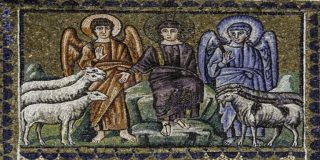In the 1880s an Oxford mathematician by the name of Edwin Abbott wrote a book called Flatland. Flatland was a two-dimensional world, in which people and things could move side to side but not up or down. This was a world that resembled a sheet of paper, with its inhabitants shapes that appeared upon the surface of the paper. One day a sphere from the three-dimensional world shows up. The inhabitants of flatland are confounded. When it first touches in Flatland the sphere is represented by a point, much like a dirty tennis ball leaving a mark on a piece of paper. But as it moves through Flatland the dot becomes a circle that grows ever larger then narrows again and disappears (imagine the tennis ball passing through the surface of the paper). From its vantage point above Flatland the sphere describes the contents of people’s homes even though it has not entered the home. These things confound the inhabitants of Flatland.
The story is related by John Houghton, former professor of atmospheric physics at Oxford University, in his book Does God Play Dice? (IVP 1988) to describe God’s relation to our world.
The sphere in Spaceland was normally outside Flatland yet could peer into all parts of the inside of Flatland; all events in Flatland were transparent to him. Further, he could enter and be present in Flatland anywhere he pleased. In a similar way, with the analogy of an extra dimension, we can imagine God in the spiritual dimension being outside the material universe yet being all-seeing and all-knowing regarding events within it, and having the ability to be present anywhere within it.
Bit of a headspin, but it helps me make sense of God.






